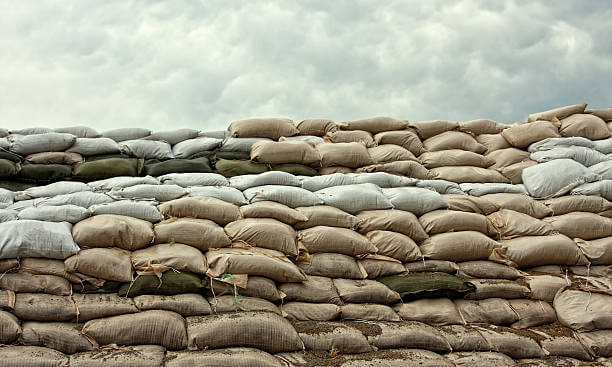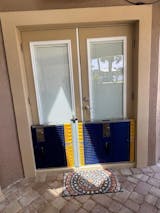Sandbagging might be the oldest way to protect your house or even the whole area from flooding. Unfortunately, we are used to the fact that good-old technologies are supposed to be eco-friendly and sustainable. That is mostly why so many people today choose to sandbag over innovative flood protection solutions like flood gates, pontoons, and barriers.
Indeed, hardly there any material that is more sustainable than sand. It is everywhere, and it does not require any fancy and energy-consuming technology to extract and transport. Therefore, people who prefer sandbagging often have peace of mind thinking that while protecting their houses from the disaster, they are protecting the Earth and providing a better future for their children.
However, the ongoing tendency of global warming and climate change, which mostly results in the increasing amount of floods, demonstrates that we either don`t make enough effort or do not seem to work too well.
In this article, we shall discuss whether sandbagging is indeed an eco-friendly and sustainable way to protect your property from flooding and what alternatives you can find on the modern market that will help you save a great deal of time, money, effort, and the planet as well.
Is sandbagging sustainable?
To answer this question, let`s take a closer look at the whole concept of using sandbags to protect your house.
You are going to need:
- lots of strong bags;
- lots of sand.
You will need some extra time and maybe several vacant pairs of hands, but we are all ready to make some sacrifice once it comes to protecting the environment, aren`t we?
Now let`s go over the materials mentioned above and see how sustainable they are.
Bags for sandbagging.
Modern sandbags are made out of burlap or woven polypropylene that is filled with sand or soil. Therefore, your bags must be strong and durable enough. Otherwise, your sandbagging dam won`t last few minutes in the face of a real flooding event.
That is why if you are planning to make your recycled DIY sandbags out of old t-shirts and pillowcases to make the idea of sandbagging even more sustainable, it simply won`t work.

Each sandbag has to contain around 15 kg (33 lb) of sand or soil. It is an average weight of a fully-packed vacation suitcase (if you still remember what it is like to fly somewhere on vacation). And you are going to need a lot of them piled on one another.
Even the slightest crack or tear of the material will inevitably lead to the fact that you get a "weak link" in your dam, and it will fail.
That is why you absolutely have to use those bags made out of burlap and polypropylene.
Technically, Burlap is a pretty sustainable material. It is made out of jute - a highly renewable plant, and there is no significant damage to the environment, water, or air pollution associated with burlap manufacture.
However, there are several types of burlap. The material used for sandbagging often goes through pretty significant chemical processing. Its main purpose is to make sandbags the most robust. When sandbags go through flooding, they get wet, and most of those chemicals and detergents get released into the environment rightaway. In contrast, others join them once your perfectly sustainable anti-flooding solution ends up on a landfill.
Using polypropylene bags for sandbagging cannot be considered sustainable by its definition. Derived from petroleum-based materials, poly[propylene bags are an environmental hazard from the moment they are being manufactured till the day they inevitably end up on a dump or at the ocean. And many years after that, of course.
Let`s put the manufacturing process aside and talk about sandbagging exclusively. The minute polypropylene sandbags get wet, they start releasing the so-called microplastics into the water. Bulking up in the world ocean, microplastics can never fully decay. They appear in the water animals, and we drink, in the water where numerous marine species live and multiply. It inevitably leads to genetic mutations, chorionic diseases, and, as a result, the extinction of whole species.
And it does not really matter what kind of material you are using for your sandbagging. Eventually, those bags have to be disposed of in a special landfill. They call it "sanitary landfills" in the official regulations, but landfills are always landfills, no matter how you cause them.
The fact is, once your sandbags got in contact with flooding water, especially if we talk about the so-called "blackwater" contaminated with sewers, chemicals, and other potentially dangerous materials, they cannot be re-used or recycled in any manner.
Such sandbags have to be disposed of according to the official regulations. Technically, it means "stored on a landfill forever". However, the material recycling process is too costly and energy-consuming. Therefore most officials would not even think about it and just keep on bulking them at landfills.
Those landfills occupy massive territories, forcing wildlife and plants out of their natural inhabitants and inevitably leading to their extinction.
So, next time you check out the market for sustainable and eco-friendly anti-flooding solutions, try to look a little bit beyond the flooding event itself.
In fact, sandbagging:
- requires manufacture and consumption of polypropylene materials;
- contributes to the build-up of microplastics in the world ocean;
- cannot be fully recycled and therefore contributes to the growth of landfills worldwide.
Looking for a truly sustainable anti-flooding solution, try to focus on those that would protect your house in case of disaster and can be used multiple times after that.
For example, the Dam East Flood Gates are an efficient and modern solution for any household or business. It can be installed and removed in a matter of several minutes and used for many years, securing your property and belongings from floodwater.
Flood gates are made out of high-quality, non-toxic materials, don`t release microplastics into the world ocean. Moreover, once the water retreats, you can fold and store your flood gates securely in your garage or basement. Unlike sandbagging, it does not require any disposal protocols and won`t contribute to the growth of landfills.
Contact us today and learn about Dam Easy Flood gates and other innovative anti-flooding solutions that will help you protect your property and our planet.
$949.00
DAM EASY® FLOOD GATE - DOOR DAM Floods are becoming more common around the world. What was once a 100-year phenomenon is now a seasonal trend that homeowners must deal with. That’s EXACTLY why you need this Dam Easy Flood… Read MoreFlood Barrier Door Dam - Ultimate Flood Gate




















